#MFSK64
Explore tagged Tumblr posts
Text





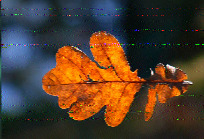


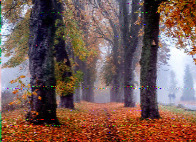
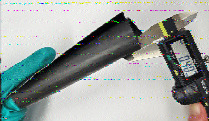
@swradiogram 31OCT24
Welcome to program 376 of Shortwave Radiogram.
I'm Kim Andrew Elliott in Arlington, Virginia USA.
Here is the lineup for today's program, in MFSK modes as noted:
1:43 MFSK32: Program preview (now) 2:51 MFSK32: Daylight saving time linked to lost productivity 8:01 MFSK64: Ultra-thin film absorbs electromagnetic waves* 12:37 MFSK64: This week's images* 28:27 MFSK32: Closing announcements
with image(s)
Please send reception reports to [email protected]
And visit http://swradiogram.net
We're on X/Twitter now: @SWRadiogram
inkt9
From Phys.org:
Daylight saving time linked to lost worker productivity
Posted by Sherri Buri McDonald University of Oregon October 29, 2024
As much of the world prepares to turn clocks back an hour this fall, new research from the University of Oregon finds the annual spring forward to daylight saving time affects worker productivity more than previously thought.
Rather than affecting workers for just a day or two, the adjustment to daylight saving time can affect worker productivity for up to two weeks, said Glen Waddell, a UO labor economist and co-author of a new research in the Journal of Economic Behavior and Organization. He collaborated on the paper with Andrew Dickinson, a doctoral student in economics in the UO's College of Arts and Sciences.
The researchers did not identify a similar effect in the fall. They found that early-morning productivity picked up following the return to standard time.
Waddell and Dickinson looked at the daily work activity of 174,505 people who used GitHub around the transition to daylight saving time from 2013 to 2019. GitHub is a cloud-based version-control platform used by software developers, engineers and other collaborative programmers. It has 83 million users worldwide.
The publicly available GitHub records enabled the researchers to examine worker activity down to the second.
"When we look inside the day, hour by hour, we're actually able to see patterns of workers getting off to a bumpy start in the early morning and trying to make up for their lost productivity throughout the rest of the afternoon, and this is happening for upwards of two weeks," Waddell said.
Although GitHub users don't represent all workers, they do provide valuable insights into how "losing" an hour in the transition to daylight saving time affected their productivity, he said.
The researchers also looked at the effect on workers when they returned to standard time in the fall.
"We actually see a picking up of productivity in those early morning hours, 8 a.m. to 10 a.m., with the extra sleep being the likely reason," Waddell said.
The paper's findings have direct relevance for the 1.6 billion people in 75 countries who change to daylight saving time each spring and back to standard time each fall.
The research also comes at a time when United States lawmakers are considering abandoning the yearly time change. In 2021, the U.S. Senate unanimously passed the Sunshine Protection Act, which would end the return to standard time for the months of November to March.
"Our research findings could be interpreted as yet more reason to put this clock-switching experiment behind us," Waddell said. "If we were fence-sitters before, maybe this is just another nudge toward the direction of doing away with this practice."
Arizona and Hawaii already remain on standard time all year, and a growing number of countries, including China, Russia, Pakistan and Brazil, also have abandoned daylight saving time.
Introduced in 1916 and soon after adopted by many Western countries, daylight saving time was intended to save energy. However, consensus opinion today finds the energy savings to be negligible, on the order of plus or minus 1%, according to the paper.
Shortwave Radiogram now changes to MFSK64 …
This is Shortwave Radiogram in MFSK64
Please send your reception report to [email protected]
From TechXplore:
Ultra-thin film that absorbs nearly all electromagnetic waves could improve reliability of wireless communication
by National Research Council of Science and Technology (South Korea) October 28, 2024
A conceptual diagram of the electromagnetic wave absorption and shielding material developed by the research team, along with the designed conductive pattern. Credit: Korea Institute of Materials Science (KIMS)
The research team of Dr. Byeongjin Park and Dr. Sang Bok Lee from the Composites & Convergence Materials Research Division at the Korea Institute of Materials Science (KIMS), has developed the world's first ultra-thin film composite material capable of absorbing over 99% of electromagnetic waves from various frequency bands (such as 5G/6G, WiFi, and autonomous driving radar) using a single material.
The findings were published as the cover article in the October 1 edition of Advanced Functional Materials.
This electromagnetic wave absorption and shielding material is less than 0.5mm thick and is distinguished by its low reflectance of less than 1% and high absorbance of over 99% across three different frequency bands.
Electromagnetic waves emitted by electronic components can cause interference, leading to performance degradation in other nearby electronic devices.
Electromagnetic shielding materials are used to prevent this, and absorbing electromagnetic waves is more effective at reducing interference than merely reflecting them. However, conventional electromagnetic shielding materials reflect over 90% of the waves, with an actual absorbance often as low as 10%. Moreover, materials with higher absorbance are typically limited to absorbing electromagnetic waves within a single frequency band.
To overcome these limitations, the research team developed a composite material that can absorb electromagnetic waves across multiple frequency bands simultaneously.
This technology absorbs and eliminates electromagnetic waves, resolving secondary interference issues. The material is also thin, flexible, and durable enough to maintain its shape even after being folded and unfolded thousands of times, making it suitable for use in rollable phones and wearable devices.
The team synthesized a magnetic material by altering the crystal structure of ferrite, enabling it to selectively absorb desired frequencies. They produced an ultra-thin polymer composite film and incorporated conductive patterns on the film's back side to control the propagation of electromagnetic waves.
By adjusting the shape of the conductive pattern, electromagnetic wave reflection at specific frequencies can be dramatically reduced. Additionally, a carbon nanotube thin film with high shielding properties was applied to the back to further enhance the material's electromagnetic wave shielding capabilities.
Senior researcher Byeongjin Park of KIMS, who led the project, said, "As the applications of 5G/6G communications continue to expand, the importance of electromagnetic wave absorption and shielding materials is growing."
He added, "This material has the potential to significantly improve the reliability of wireless communication devices such as smartphones and autonomous vehicle radars."
The research team has completed domestic patent registration and has also applied for patents in the U.S., China, and other countries. Additionally, the technology has been transferred to several domestic material companies, and it is currently being applied to actual communication devices and automobiles.
Image: The electromagnetic wave absorption and shielding material, showing its thin and flexible form and its shape remaining intact even after 5,000 bending tests …
This is Shortwave Radiogram in MFSK64
Please send your reception report to [email protected]
This week's images …
This is Shortwave Radiogram in MFSK32 …
Shortwave Radiogram is transmitted by:
WRMI, Radio Miami International, wrmi.net
and
WINB Shortwave, winb.com
Please send reception reports to [email protected]
And visit http://swradiogram.net
Twitter: @SWRadiogram or twitter.com/swradiogram
I'm Kim Elliott. Please join us for the next Shortwave Radiogram.
3 notes
·
View notes
Text
Shortwave Radiogram, 29 May-4 June 2025 (program 403): Digital modes that might be received in Papua New Guinea
This week's program (403) features "shop news": one story about shortwave broadcasting (domestic, but DXers will receive it internationally), and one about the shutdown of most of the Voice of America. The first is a text item from Radio New Zealand about Papua New Guinea's decision to restore its domestic shortwave broadcasting service, to cover all of that country's remote areas. (I hope they can also find inexpensive but good shortwave receivers for this audience. Many of the cheap shortwave radios these days, generally made in China, are substandard.) The second story is from Deutsche Welle, explaining why the shutdown of VOA is especially bad for audiences in Turkey, where the domestic media are under increased control. It is now up to DW and BBC to provide Turkish-language news from outside. The situation with US international broadcasting is fluid. For VOA, the news is mostly bad. But RFE/RL will receive emergency funding from the EU. I try to keep up with all these events at kaedotcom.bsky.social, which I think you can access even if you don't have a Bluesky account. A video of last week's Shortwave Radiogram (program 344) is provided by Scott in Ontario (Wednesday 1330 UTC). The audio archive is maintained by Mark in the UK. H0b0_Radio in Washington offers an IQ recording. Analysis is provided by Roger in Germany. Here is the lineup for Shortwave Radiogram, program 403, 29 May-4 June 2025, in MFSK modes as noted: 1:42 MFSK32: Program preview 2:55 MFSK32: Papua New Guinea to reintroduce shortwave 5:52 MFSK64: VOA shutdown hits harder in Turkey 11:01 MFSK64: This week's images 24:53 MFSK32: Closing announcements (Ignore the asterisks attached to the two news stories in the transmitted program preview. Those images were cut during final production.) Please send reception reports to [email protected] And visit http://swradiogram.net Bluesky: swradiogram.bsky.social or https://swradiogram.bsky.social Twitter: @SWRadiogram or https://twitter.com/swradiogram (visit during the weekend to see listeners’ results) Facebook group: https://www.facebook.com/groups/567099476753304 Shortwave Radiogram Gateway Wiki: https://wiki.radioreference.com/index.php/Shortwave_Radiogram_Gateway THE SHORTWAVE RADIOGRAM TRANSMISSION SCHEDULE IS IN THE IMAGE IMMEDIATELY BELOW. IF THE IMAGE DOES NOT DISPLAY FULL WIDTH, CLICK ON IT.
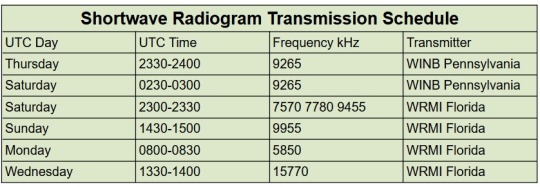
Other Shortwave broadcast programs that include digital text and images include The Mighty KBC, Pop Shop Radio and Radio North Europe International (RNEI). Links to these fine broadcasts, with schedules, are posted here.
Tobias in Germany emailed these results from 24 May 2025, 0230-0300 UTC, 9265 kHz from WINB Pennsylvania ...

2 notes
·
View notes
Text
Shortwave Radiogram, 14-19 April 2022: Digital modes that are probably not responsible for the temperature swings on Neptune
The Greek government has decided to delay the decision to eliminate shortwave broadcasting from March 31 or May 31. To help the Greek government in its decision, last week Shortwave Radiogram transmitted Greek text, as a demonstration of radio as a substitute for an increasingly censored and restricted internet. At the bottom of this email, you can see the Greek text received in Greece by our friend Merkouris. Videos of last weekend's Shortwave Radiogram (program 249) are provided by Scott in Ontario and Frigid RF in Virginia (both Friday 1300 UTC), Merkouris in Greece (Saturday 0230 UTC Greek excerpt), and Mike R. somewhere in the USA (Sunday 2330 UTC excerpt). (And see the April meeting of the Palomar Amateur Radio Club in California with a demonstration of Fldigi, using Shortwave Radiogram audio.) The audio archive is maintained by Mark in the UK. Analysis is prepared by Roger in Germany. Here is the lineup for Shortwave Radiogram, program 252, 14-19 March 2022, in MFSK modes as noted: 1:34 MFSK32: Program preview 2:41 MFSK32: Surprising temperature swings on Neptune* 7:40 MFSK64: Fiber-optic cables through water pipes 12:07 MFSK64: This week's images* 28.10 MFSK32: Closing announcements * with image(s) Please send reception reports to [email protected] And visit http://swradiogram.net We're on Twitter now: @SWRadiogram * with image(s) Please send reception reports to [email protected] And visit http://swradiogram.net Twitter: @SWRadiogram or https://twitter.com/swradiogram (visit during the weekend to see listeners' results) Facebook group: https://www.facebook.com/groups/567099476753304 Shortwave Radiogram Gateway Wiki https://wiki.radioreference.com/index.php/Shortwave_Radiogram_Gateway
Shortwave Radiogram Transmission Schedule
| UTC Day | UTC Time | Frequency | Transmitter | |----------|---------------|------------------|-------------------| | Thursday | 2330-2400 UTC | 9265 kHz | WINB Pennsylvania | | Friday | 1300-1330 UTC | 15770 kHz | WRMI Florida | | Friday | 1500-1530 UTC | 15750 kHz DRM | WINB Pennsylvania | | Saturday | 0230-0300 UTC | 9265 kHz | WINB Pennsylvania | | Sunday | 2330-2400 UTC | 7730 kHz | WRMI Florida | | Monday | 0800-0830 UTC | 5850 7780 kHz | WRMI Florida | | Tuesday | 1430-1500 UTC | 9955 kHz | WRMI Florida |
The Mighty KBC transmits to North America Sundays at 0000-0200 UTC (Saturday 8-10 pm EDT) on 5960 kHz, via Germany. A minute of MFSK is at about 0130 UTC. Reports to Eric: [email protected] . See also http://www.kbcradio.eu/ and https://www.facebook.com/TheMightyKbc/. “This is a Music Show” Most of the show is a music show, but the host transmits some MFSK-64 text and image near the end of the broadcast. It’s transmitted on WRMI, Thursdays at 0200-0300 UTC on 5850 kHz (Wednesday evening in the Americas). Also look for a waterfall ID at the beginning of the show. [email protected] www.twitter.com/ThisIsAMusicSho/ @ThisIsAMusicSho https://thisisamusicshow.com Pop Shop Radio from British Columbia, Canada, includes "a whole variety of pop music, such as records from the 1960s and 1970s that were played on Top-40 radio stations not only in North America but also on offshore radio and stations like Radio Luxembourg." The programs now include some MFSK32 text and an image. Website: popshopradio.ca. Twitter: @popshopradio1 Email: [email protected].
Merkouris in Greece received the Greek text and accompanying image, 9 April 2022, 0230-0300 UTC, 9265 kHz from WINB Pennsylvania. See also his video and decode of all the images. ...
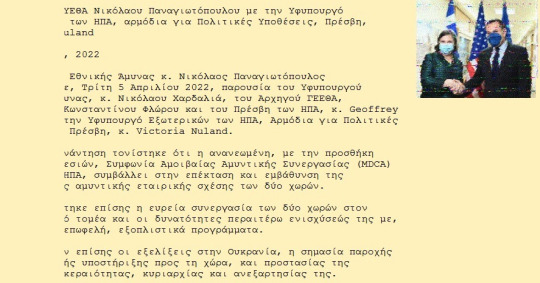
0 notes
Photo

A collection of pics received through MFSK64 on shortwave station 7730MHz about 2300 miles away. @swradiogram #swradiogram #radio #shortwaveradio https://www.instagram.com/p/CaxeRtiPDGO/?utm_medium=tumblr
0 notes
Text







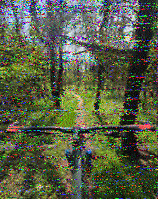


9265 kHz @2330z G106 radio G5RV antenna Southern Tier NY
Rough reception tonight.
MFSK-32 0-5 db
MFSK-64 -6-0 db
Repeat of 1st story from last week but 2nd story new and new pics.
Welcome to program 399 of Shortwave Radiogram.
@swradiogram
I'm Kim Andrew Elliott in Arlington, Virginia USA.
Here is the lineup for today's program, in MFSK modes as noted:
1:46 MFSK32: Program preview (now) 3:06 MFSK32: Digital Radio Mondiale shortwave learning event* 10:12 MFSK64: Judge halts Trump's shutdown of Voice of America 12:46 MFSK64: This week's images 27:42 MFSK32: Closing announcements
Same as last week's DRM story, including the triangle image, but this time in MFSK32
Please send reception reports to [email protected]
And visit http://swradiogram.net
We're on Bluesky now: SWRadiogram.bsky.social
And X/Twitter: @SWRadiogram
Digital Radio Mondiale press release:
Digital Radio Mondiale DRM Delivers Distance Education – An Excellent First for Africa and the World
April 10, 2025
The DRM Consortium, in cooperation with St Joseph's Senior Secondary School in the Gambian capital, Banjul, has conducted its first public demonstration of an innovative project to deliver education at a distance via radio on April 8th.
In a Gambian, African and world first for digital radio, a maths lesson from the Encompass Media Services Woofferton transmitting station in the UK was broadcast (on 15390 kHz and 21740 kHz), over 4,000 kilometers to The Gambia. A group of 15-year-old students received audio and text lessons transmitted via DRM shortwave. The content was made available to their tablets, mobiles through a local Wi-Fi connection to the radio.
The demonstration showcased the ability of DRM digital radio to deliver lessons in multiple languages as the key audio lessons were in English followed by two AI-generated versions in French and German.
A central component of the broadcast, alongside the audio, was a digital textbook (Journaline), showcasing how the lesson content — including graphics — can be made available in several languages, both as a live accompaniment and for on-demand access.
The on-demand use for the distance transmitted lessons (the cached lessons) was shown at the public event held at the St Joseph's Senior Secondary School in the presence of other students, teachers, VIPs and the press.
As the technology only requires a single transmitter thousands of miles or kilometres away, the lessons can be delivered entirely remotely or supported by teachers locally; this proved that educational content can be delivered, without the need of IP or internet.
The revolutionary new application of Digital Radio Mondiale (DRM) technology is designed to remove barriers to education for populations most in need worldwide. The technology also has applications in areas such as medicine and religious education.
The tablets used for this e-learning demonstration were donated to the school in Banjul as part of the commitment to supporting continued learning and access to technology by the DRM Consortium and the key members which supported this ground-breaking demonstration.
Full text: https://www.drm.org/digital-radio-mondiale-drm-delivers-distance-education-an-excellent-first- for-africa-and-the-world/
On Shortwave Radiogram, we can also transmit lessons for schools outside the reach of the internet. We can't transmit voice like DRM does, but we can transmit text, and we can transmit the image of a triangle. And all of this can be received in reception conditions in which the DRM signal may drop out.
The subject of the DRM transmission was triangles. Here is our lesson on triangles …
. . .
If we, in the following triangle, draw the altitude from the vertex of the right angle, then the two triangles that are formed are similar to the triangle we had from the beginning. The two triangles formed are also similar to each other.
△ABC ∼ △BCD ∼ △ABD
The measure of the altitude drawn from the vertex of the right angle to the hypotenuse is the geometric mean between the measures of the two segments of the hypotenuse. Hence BD is the geometric mean of AD and DC.
Shortwave Radiogram now changes to MFSK64 …
Kayla Epstein April 22, 2025
A federal judge has ordered the Trump administration to restore all jobs and funding for the Voice of America and other US-backed news outlets, ruling that efforts to dismantle it violated the law and Constitution.
Over 1,300 VOA employees, includingKrout 1,000 journalists, were placed on leave following President Donald Trump's order. The White House has accused the broadcaster of being "anti-Trump" and "radical".
VOA, still primarily a radio service, was set up during World War II to counter Nazi propaganda, and has become a major global media broadcaster.
The ruling noted that b}oÜ 3o=
MOA0t»tght!hnews for the first time in its 80-year existence ".
Judge Royce Lamberth said the administration acted "without regard to the harm inflicted on employees, contractors, journalists, and media consumers around the world".
He ordered the administration to take steps to restore employees and contractors to the jobs they had prior to the executive order, and to do the same for Radio Free Asia and the Middle East Broadcasting Networks.
The judge found the administration also likely violated the International Broadcasting Act and Congress' power to appropriate funding.
"My colleagues and I are grateful for this ruling. But we know that this is just a small step forward, as the government is likely to appeal," said Patsy Widakuswara, the VOA White House bureau chief and a lead plaintiff in the lawsuit.
"We are committed to continuing to fight against what we believe is the administration's unlawful silencing of VOA until we can return to our congressional mandate: to tell America's stories with factual, balanced, and comprehensive, reporting," she said.
Trump has long criticised VOA as part of his broader attacks against the media, frequently accusing mainstream outlets of bias.
After taking office in January, he appointed a political ally, Kari Lake, to run VOA. Lake has previously supported Trump's false claims that the 2020 election was stolen from him.
In March, Trump ordered the US Agency for Global Media (USAGM), which oversees VOA and funds outlets like Radio Free Europe and Radio Free Asia, to be "eliminated to the maximum extent consistent with applicable law".
A separate judge in New York temporarily blocked the executive order after journalists, advocacy groups and unions sued, arguing the move was unlawful.
Judge Lamberth, who is based in Washington, DC, ruled the Trump administration lacked the authority to shutter VOA, which is funded by Congress and has a legislative mandate to deliver credible news globally.
"It is hard to fathom a more straightforward display of arbitrary and capricious actions than the Defendants' actions here," he wrote.
USAGM and the White House did not immediately respond to a request for comment.
This is Shortwave Radiogram in MFSK64
Please send your reception report to [email protected]
This week's images …
A Least Grebe, usually not more that 25 cm long, at Três Picos State Park, Brazil. tinyurl.com/29rawczj …
A bicycle ready for a trail at Codorus State Park in Pennsylvania, not far from our WINB transmitter site. tinyurl.com/2cdcdjag …
A blue-and-white flycatcher in Japan. tinyurl.com/23st98zw …
Sunrise over Rock Creek Park in Washington DC, April 22. tinyurl.com/2yh8xzzy …
Oakland mariposa lily showing its geometry in Mount Tamalpais State Park, California. tinyurl.com/2bax2rwd …
A Betty Boop rose at the Los Angeles Arboretum. tinyurl.com/284wou7m …
This pottery tea set was on sale last weekend at the Los Angeles Arboretum. tinyurl.com/2bc6kc6s …
Our art of the week accompanied a New York Times essay about Votvot, an alternative RFE/RL service for Russian audiences. tinyurl.com/2cmsjxth …
Shortwave Radiogram returns to MFSK32 …
This is Shortwave Radiogram in MFSK32 …
Transmission of Shortwave Radiogram is provided by:
WRMI, Radio Miami International, http://wrmi.net
and
WINB Shortwave, http://winb.com
Please send reception reports to [email protected]
And visit http://swradiogram.net
http://swradiogram.bsky.social
X/Twitter (for now): @SWRadiogram
I'm Kim Elliott. Please join us for the next Shortwave Radiogram.
11 notes
·
View notes
Text









@swradiogram
@swradiograms-blog
Received 2300z 9265khz 20MAR2025
Xeigu G106 G5RV antenna Southern Tier NY
Before RSID: <<2025-03-20T23:32Z MFSK-32 @ 9265000+1500>>
Welcome to program 394 of Shortwave Radiogram.
I'm Kim Andrew Elliott in Arlington, Virginia USA.
Here is the lineup for today's program, in MFSK modes as noted:
1:47 MFSK32: Program preview (now) 3:01 MFSK32: French, German international broadcasters re USAGM 6:59 MFSK64: France 24 analysis: Trump mutes Voice of America 13:13 MFSK64: This week's images* 28:38 MFSK32: Closing announcements
with image(s)
Please send reception reports to [email protected]
And visit http://swradiogram.net
We're on Bluesky now: SWRadiogram.bsky.social
And X/Twitter: @SWRadiogram
Kim's note:
During the past week, I have been occupied following the news about President Trump's closure of the Voice of America -- where I worked for 32 years -- along with its parent agency US Agency for Global Media (USAGM). USAGM corporate entities Radio Free Europe/Radio Liberty and Radio Free Asia have had their grants suspended, but they have stayed in operation for the time being.
Both stories in this Shortwave Radiogram are about these devlopments.
Deutsche Welle statement, with France Médias Monde (Radio France International and France 24):
FMM and DW alarmed by USAGM employees and funding suspension
March 17, 2025
France Médias Monde (FMM) and Deutsche Welle (DW) are alarmed by the US administration's decision on 15 March to halt funding for American public international media.
That includes Voice of America, Radio Free Europe/Radio Liberty, and Radio Free Asia. This move threatens to deprive millions of people worldwide of a vital source of balanced and verified information—especially in countries where independent journalism is scarce or nonexistent. By weakening this crucial safeguard against disinformation and manipulation, the decision endangers global media freedom.
This action is particularly concerning given the United States' long-standing role as a champion of press freedom and professional journalism within the DG8 and beyond. At a time of increasing global polarization, the need for independent, multilingual, and pluralistic journalism has never been more critical. The abrupt nature of this decision only heightens concerns over its impact.
While FMM and DW remain committed to their mission, they recognize the broader risks posed by the potential loss of their American counterpart in the shared pursuit of democracy and free expression. They stand in full solidarity with their colleagues at the US Agency for Global Media (USAGM), many of whom may now face the difficult prospect of leaving the United States and returning to their home countries.
This decision underscores, once again, the urgent need to defend the European model of independent public service media—embodied by the continent's international broadcasters—and to secure the long-term sustainability of their funding.
Shortwave Radiogram now changes to MFSK64 …
Before RSID: <<2025-03-20T23:37Z MFSK-32 @ 9265000+1500>>
This is Shortwave Radiogram in MFSK64
Please send your reception report to [email protected]
From France 24:
Trump mutes Voice of America, makes space for Russian and Chinese influence US President Donald Trump last week cut funding for international public radio stations Voice of America and Radio Free Europe, which broadcast programmes aligned with "democratic values" to millions of listeners around the world. In their absence, Russia and China are now set to fill the gap with their own state media offerings.
By Sébastian SEIBT 19/03/2025
President Donald Trump signed an executive order reducing the scope the US Agency for Global Media, which oversees Voice of America, as part of his campaign to downsize the US government. © Algi Febri Sugita, ZUMA Press Wire via Reuters
The decision was met with dismay in Europe and delight in Beijing, Moscow and Tehran. Trump on March 14 decided to cut funding for the US Agency for Global Media (USAGM) – home to international radio stations Voice of America (VOA) and Radio Free Europe/Radio Liberty (RFE/RL).
Hundreds of staff members – categorised as "radical left crazy people" by Trump ally and advisor Elon Musk – were placed on leave at the decades-old media outlets which, together, broadcast in more than 60 languages to 420 million listeners in more than 100 countries.
They are among "the few credible sources in dictatorships like Iran, Belarus, and Afghanistan", said Czech Foreign Minister Jan Lipavsky at a meeting in Brussels on Monday as he urged EU leaders to stump up funds to save RFE/RL.
A 'lie factory'
But in Russia, China and Iran, media outlets celebrated the news. "This is an awesome decision by Trump!" said Margarita Simonyan, editor of Russia's RT network. "We couldn't shut them down, unfortunately, but America did so itself."
The Kremlin did not comment but current and former Russian officials told independent media outlet The Moscow Times that it was glad to see the outlets go.
In recent years, the Kremlin was "especially irritated" by RFE/RL's attempts to undermine "the wartime censorship Moscow imposed after the full-scale invasion of Ukraine" in Russia and former Soviet countries, the news outlet said.
An editorial in China's Global Times branded VOA a "lie factory" that was "widely recognised as Washington's carefully crafted propaganda machine".
"When it comes to China-related reporting, VOA has an appalling track record," it said, criticising its coverage of China's treatment of the Uighurs, tensions in the South China Sea and Beijing's economic difficulties.
In Iran, some media outlets said Trump had put a stop to "wasting money" to pay "corrupt" journalists who wanted to overthrow Tehran's regime.
Soft power
Silencing VOA and RFE/RL "is not just like any other news organisation closing", says Martin Scott, professor of media and global development at the University of East Anglia in the UK.
Both organisations are symbolic of the US itself, and its position in the world order, Scott adds. "They are an expression of US values in relation to press freedom and democracy."
VOA was founded in 1942 to promote democratic ideas in Nazi Germany, including sharing content like American music programs as a form of cultural diplomacy. During the Cold War, RFE began broadcasting to Soviet satellite states while its sister station RL focused on the Soviet Union.
VOA, especially, is "a soft power tool that has been used since the Second World War", says Jack Thompson, a lecturer in the American studies department at the University of Amsterdam. "It has been part of US foreign policy for the entire post-World War II era."
Its success in building global reach was due, in part, to its annual budget of $267.5 million – a large sum compared with other public service international broadcasters.
"Voice of America had the means and the scale," says Scott. "It was effective because of its massive reach in so many different languages to so many hard-to-reach precarious parts of the world."
Both radio stations had undeniably political aims. "Their entire job was to highlight aspects of regimes that are run counter to what you might call liberal democratic values," Thompson says.
The impact of their loss will be "enormous", Alsu Kurmasheva a Radio Free Europe journalist who was freed from detention in Russian as part of a prisoner exchange in August 2023, told CNN. "How is America going to tell its story?"
A ‘democratic disaster'
Why would Trump want to silence pro-US media? Their government-funded but independent stance goes against the project 2025 plan to reshape the US federal government put forward by conservative think tank the Heritage Foundation and endorsed by members of the Trump administration.
"The idea is that the president is the sole repository of all democratic authority, and there should not be democratic checks and balances against him – including independent federal agencies like the USAGM," says Kate Wright, senior lecturer in media and communications at the University of Edinburgh and co-author with Martin Scott of "Capturing News, Capturing Democracy: Trump and the Voice of America".
The president has attacked the USAGM since his first term and has been spurred on by new advisor Musk, who is in charge of overseeing sweeping government cuts.
Musk "is one of the first people that started saying the US needed to get rid of Voice of America", says Thompson, "in part because he is an economic libertarian and he wants to dramatically shrink the size of the US government, and in part because he and a lot of others on the right viewed VOA and FRE/RL as essentially being captured by extreme left-wingers. They thought that too much of their content was woke."
But as the US decreases its media footprint, it risks ceding influence to other global powers. Around the world, "authoritarian countries are pushing more and more money into international media networks", says Wright. "Media is the first and most consistent target for would-be autocrats."
Amid a global wave of democratic backsliding, she says "the decision to withdraw a course of credible and independent journalism is a democratic disaster".
If sources such as Voice of America disappear, their vast audiences will not stop seeking out news – they will get it from the few alternative sources they have available to them. "Often all you're left with is news and information that is perhaps unreliable, untrustworthy, or not independent," says Scott.
American think tank the Lowry Institute found that in Asia in 2024, VOA was the number one ranked foreign media radio broadcaster by a considerable margin. But in second place was Russia's Sputnik.
The average listener may not be able to distinguish much difference between the two says Thompson, meaning that if one becomes unavailable, "they will get their information from another source. And if the next best source is Sputnik, then they are going to get their information from Sputnik."
"There can't be empty space in media," adds Kurmasheva. Without organisations like RFE/RL, she says, "Russian and Chines propaganda will fill [the gaps]."
She hopes her organisation will find a way to survive with its values intact. "We are still in business. Nobody quit. Nobody resigned. Our leadership is working on it and we hope we will stay in business one way or another," she said.
But the Trump administration may have other plans for its diminished global networks. "It may be that their intention is to replace these journalists with perhaps more compliant journalists," says Wright, "or to create a new network, which perhaps would not be bound by the sort of legal restrictions that protects Voice of America from political interference. We can't assume this is the end of the road."
This is Shortwave Radiogram in MFSK64
Please send your reception report to [email protected]
This week's images …
The sign outside Voice of America headquarters in Southwest Washington DC. "A Free Press Matters." tinyurl.com/29a72v7q …
Beach umbrellas outside a shopping mall in Bangkok. tinyurl.com/2y9v7h9z …
Cherry blossom buds on the Tidal Basin in Washington DC, with the Jefferson Memorial in the background. tinyurl.com/2bzebp85
The lunar eclipse at totality, 3:20 am March 14 in Hancock, Maryland. tinyurl.com/23koenw8 …
Tulips blooming at the Netherlands Carillion in Arlington, Virginia. tinyurl.com/28e7l8ek …
An Anna's Hummingbird feeding on Grevillea at the University of California Santa Cruz Arboretum. tinyurl.com/2b9y7sfl
Early spring blooms at the Tyler Arboretum near Philadelphia. tinyurl.com/24bgxd79 …
A crabapple bloom at an arboretum in Muscogee, Oklahoma. tinyurl.com/2adctrkd …
Our art of the week is the drawing "Soviet citizens secretly listening to The Voice of America." tinyurl.com/26odbqa2
Shortwave Radiogram returns to MFSK32 …
Before RSID: <<2025-03-20T23:58Z MFSK-64 @ 9265000+1500>>
This is Shortwave Radiogram in MFSK32 …
Transmission of Shortwave Radiogram is provided by:
WRMI, Radio Miami International, http://wrmi.net
and
WINB Shortwave, http://winb.com
Please send reception reports to [email protected]
And visit http://swradiogram.net
X/Twitter (for now): @SWRadiogram
I'm Kim Elliott. Please join us for the next Shortwave Radiogram.
6 notes
·
View notes
Text




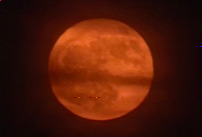
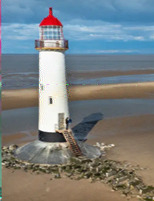
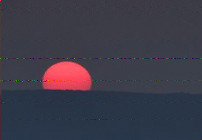




@swradiogram
9265 kHz @ 2330z as received in Southern Tier New York
Before RSID: <<2025-06-12T23:31Z MFSK-32 @ 9265000+1500>>
Welcome to program 405 of Shortwave Radiogram.
I'm Kim Andrew Elliott in Arlington, Virginia USA.
Here is the lineup for today's program, in MFSK modes as noted:
1:41 MFSK32: Program preview (now) 2:52 MFSK32: MPs express BBC World Service funding concerns 6:58 MFSK64: South Korea turns off propaganda loudspeakers 11:37 MFSK64: This week's images 28:40 MFSK32: Closing announcements
Please send reception reports to [email protected]
And visit http://swradiogram.net
We're on Bluesky now: SWRadiogram.bsky.social
And X/Twitter: @SWRadiogram
From Advanced Television:
MPs express BBC World Service funding concerns
By Colin Mann June 6, 2025
The Culture, Media and Sport Committee of the UK House of Commons has written to the Government to ask for reassurances over the future funding of the BBC World Service, following reports of potential cuts planned for the forthcoming Spending Review, which will set the Government's contribution for the following few years.
The letter highlights the vital role of the World Service to the UK's strategic priorities and calls on the Government to rule out both a 2 per cent cut to funding and any cut to the budget that will force the BBC to close one or more of its 42 language services.
The correspondence to the Secretaries of State at CMS, the MoD and the FCDO, notes the important role of the World Service in tackling mis and disinformation but warns that without sufficient resources, its services across the world may have to be reduced. It currently reaches more than 400 million people each week in languages from Arabic and Burmese to Ukrainian.
Around one third of the World Service budget comes from the Government. Despite extra funding of £32.5 million (€38.5m) for the current financial year being announced in 2024, the World Service said it would still have to make savings of £6 million.
"At a time when the Government is rightly looking to enhance our country's security, it's crucial that it does not overlook the role played by the BBC World Service," declared Dame Caroline Dinenage MP, Chair of the CMS Committee. "Through its foreign language services, it is on the frontline of the global fight against mis and disinformation, but unless it is properly funded, we risk handing the microphone away and giving free reign to media backed by hostile states to become the dominant voice around the world. Ministers have told us that the World Service bolsters UK security. Cutting its funding now would undoubtably make us all less safe."
The Committee held two evidence sessions late in 2024 as part of work with two other committees on the funding of the BBC World Service, and followed up with a letter urging the Government to ensure sufficient resources so that it is less reliant on the licence fee and short-term funding cycles.
The BBC responded to the letter in February 2025 and the Government in March. The BBC also wrote to the Committee following an evidence session with the Director General and Chair in March, which included further content on the World Service.
Shortwave Radiogram now changes to MFSK64 …
Before RSID: <<2025-06-12T23:37Z MFSK-32 @ 9265000+1499>>
This is Shortwave Radiogram in MFSK64
Please send your reception report to [email protected]
From BBC News:
South Korea turns off propaganda loudspeakers to North
Joel Guinto June 11, 2025
South Korea's military says it has suspended its loudspeaker propaganda broadcasts across the border to North Korea, as part of a bid to "restore trust" between both countries.
The move comes a week after the country elected its new president Lee Jae-myung, who had campaigned on improving inter-Korean ties.
Pyongyang considers the loudspeaker propaganda broadcasts an act of war and has threatened to blow them up in the past.
They were paused for six years but resumed in June last year in response to Pyongyang's campaign of sending rubbish-filled balloons across the border to the South.
In recent years, the broadcasts have included news from both Koreas and abroad as well as information on democracy and life in the South.
Ties between North and South Korea had deteriorated under previous president Yoon Suk Yeol, who was more hawkish towards Pyongyang.
Yoon was impeached and removed from his post for briefly placing South Korea under martial law in December, citing supposed threats from anti-state forces and North Korea sympathisers.
His successor, Lee, had campaigned on a series of pledges, including one to restart dialogue with Pyongyang and to reduce tensions between both countries.
The move aims to "restore trust in inter-Korean relations and achieve peace on the Korean Peninsula", the military said in a statement.
But organisations advocating to improve the human rights of North Koreans have criticised the suspension.
"The loudspeakers were a vital bridge to the North Korean people, a reminder that they are not forgotten. By turning them off, we've only strengthened Kim Jong Un's efforts to keep his people isolated," said Hana Song, the executive director of the Database Center for North Korean Human Rights, based in Seoul.
"The fact that one of the new government's first actions is to turn off the loudspeakers is a troubling sign," she added. "It suggests we're returning to the days of appeasing the North Korean regime."
But residents living along the border have welcomed the move. They have for months complained that their lives have been blighted by the noise of the loudspeakers coming from both the South and North, sometimes in the middle of the night.
One border region, Ganghwa county, said in a statement: "We hope this decision will lead to an end to North Korea's noise-based psychological warfare, allowing our residents to return to their normal daily lives."
According to a report by South Korea's Yonhap news agency, the military's decision also took into account the fact that the North has no longer been sending rubbish-filled balloons across the border.
However, by suspending instead of terminating the broadcasts, the military is signalling that the speakers could be fired up again if needed, adds Yonhap.
Seoul claims the broadcasts can be heard as much as 10km (6.2 miles) across the border in the day and up to 24km (15 miles) at night.
The suspension comes almost exactly a year after they were first resumed in June 2024 - when both countries had engaged in various retaliatory campaigns involving rubbish and propaganda balloons.
Reuniting with the South had always been a key, if increasingly unrealistic, part of the North's ideology since the inception of the state - until Kim abandoned the idea earlier last year.
Both countries are technically still at war since the Korean War ended in 1953 without a peace treaty.
Image: Loudspeakers near the border with North Korea …
This is Shortwave Radiogram in MFSK64
Please send your reception report to [email protected]
This week's images …A tram climbs the Calçada do Combro in Lisbon, June 10. tinyurl.com/2yg797fo …
Fishing at sunrise in Sanur, Bali. tinyurl.com/24ga8pxg …
One of the year's first blooms at the Rose Garden of the Yakima Area Arboretum in Washington state. tinyurl.com/2xqsqqkh …
Sunrise over a ridge seen from Monte Sano State Park in Huntsville, Alabama, June 3. tinyurl.com/27yd5cy8 …
A lighthouse on Talacre Beach in North Wales. tinyurl.com/2askgu52 …
The full Strawberry Moon seen from Poolesville, Maryland, June
tinyurl.com/2aon7w4b …
Sunrise on Aberdeen Beach in Scotland. tinyurl.com/295gzpzk …
A wood plank trail at Kohler-Andrae State Park, Wisconsin. tinyurl.com/2c86bwy9 …
"A Cardinal Ponders." South Llano River State Park, Texas. tinyurl.com/259wwys4 …
Our painting of the week is "Sand bank" (2020) by Conrad Clarke (UK). tinyurl.com/2c9r6hkk …
Shortwave Radiogram returns to MFSK32 …
Before RSID: <<2025-06-12T23:58Z MFSK-64 @ 9265000+1500>>
This is Shortwave Radiogram in MFSK32 …
Transmission of Shortwave Radiogram is provided by:
WRMI, Radio Miami International, http://wrmi.net
and
WINB Shortwave, http://winb.com
Please send reception reports to [email protected]
And visit http://swradiogram.net
http://swradiogram.bsky.social
X/Twitter (for now): @SWRadiogram
I'm Kim Elliott. Please join us for the next Shortwave Radiogram.
2 notes
·
View notes
Text






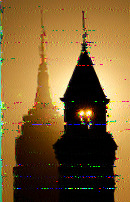


@swradiogram 9455 kHz @ 2300z broadcast was much better reception. Thanks for being one of the dreamers Kim.
Welcome to program 403 of Shortwave Radiogram.
I'm Kim Andrew Elliott in Arlington, Virginia USA.
Here is the lineup for today's program, in MFSK modes as noted:
1:42 MFSK32: Program preview (now) 2:55 MFSK32: Papua New Guinea to reintroduce shortwave* 5:52 MFSK64: VOA shutdown hits harder in Turkey* 11:01 MFSK64: This week's images* 24:53 MFSK32: Closing announcements
with image(s)
Please send reception reports to [email protected]
And visit http://swradiogram.net
We're on Bluesky now: SWRadiogram.bsky.social
And X/Twitter: @SWRadiogram
From Radio New Zealand
PNG's national broadcaster moves to reintroduce shortwave radio for nationwide coverage by 2030
24 May 2025
Papua New Guinea's National Broadcasting Corporation (NBC) is aiming to reintroduce shortwave radio to achieve the government's goal of 100 percent broadcast coverage by 2030.
This week, the state owned broadcaster hosted a workshop on the reintroduction of shortwave radio transmission, bringing together key government agencies and other stakeholders.
NBC managing director Kora Nou said the proposed reintroduction of shortwave radio can only be achieved through a collaborative effort.
He said it is important because it ensures remote communities have access to timely news and information.
NBC's executive director (engineering) Seloka Lewangu explained the importance of shortwave, while making a comparison with Frequency Modulation [FM], Shortwave, and Mediumwave transmission.
"FM is line of sight. If you see the tower, you receive the signal. If you don't see the tower, you don't receive the signal," he said.
"Medium Wave has a wider coverage compared to FM. Coverage for FM is more for cities and towns.
"When you talk about medium wave, you talk regional now.
"When you talk shortwave, you talk countrywide. That's why we are talking. If shortwave can do it for us, with all our rugged mountains and scattered islands."
This transition is timely and important for wider coverage, as it will enable broader and more reliable broadcast reach across the country's rugged terrain.
NBC also believes this shift will reduce dependency on costly hardware, making maintenance and upgrades easier while ensuring improved emergency communication and public awareness.
Shortwave Radiogram now changes to MFSK64 …
Before RSID: <<2025-05-31T23:05Z MFSK-32 @ 9455000+1500>>
This is Shortwave Radiogram in MFSK64
Please send your reception report to [email protected]
From Deutsche Welle …
US public media shutdown hits harder in Turkey
Cengiz Ozbek May 25, 2025
President Trump's shutdown of Voice of America is particularly tough on countries like Turkey, where press freedom is decreasing. It was one of the only places to get balanced coverage of Turkish-US relations, users say.
US President Donald Trump's shutdown of US media outlet Voice of America, or VOA, has had a particularly strong impact in countries like Turkey where press freedom has long been under threat.
As a result of the Trump administration's defunding of the US government-funded international news service on March 14, the organization has effectively ceased operations. News websites in all languages have not been updated for more than two months. Broadcasts on television and radio have either stopped completely or switched to music-only programming.
Before suspending service, VOA, which was often one of the rare sources of uncensored news in countries like Turkey, broadcast in 49 languages to a weekly audience estimated at 354 million people worldwide.
Banned in Turkey
Turkey, where approximately 90% of major media outlets are government-controlled, banned access to the Turkish-language website of VOA in 2022, alongside all language versions of Deutsche Welle, or DW. Since then, VOA had been trying to reach its audience in Turkey via a "mirror" website that reproduced the content of the original platform — until Trump shuttered the broadcaster completely in mid-March.
Media rights group Reporters Without Borders, or RSF, ranks Turkey 159th out of 180 countries in its 2025 World Press Freedom Index, citing ongoing repression of journalists. There are currently 17 journalists in prison in Turkey.
RSF Turkey representative Erol Onderoglu told DW that international media organizations like VOA, the BBC and DW have emerged as "constructive" role models in recent years, as the country's increasingly polarized press environment has seen a significant decline in quality and freedom.
The Turkish-language services of international broadcasters gained prominence as independent media in Turkey have diminished. Their newsrooms are based abroad but the language services also employ a small number of reporters within the country.
"VOA has also played an important role in opening the voice of Turkey's civil society movement and journalism community to the outside world and breaking the effects of isolation," Onderoglu said.
VOA Turkish was one of the most important sources for audiences in Turkey, especially regarding developments between Ankara and Washington.
"Whenever there was a development in the US that could put the Erdogan government in a difficult position — for instance, an allegation that could lead to sanctions on Turkey over Iran — the first website I would check was VOA's," one of VOA's Turkish audience told DW.
Journalists at risk
Following Trump's decision to halt federal funding to the parent agency of VOA, most of the Washington-based news service's roughly 1,300 staffers were placed on administrative leave as a first step toward termination.
A group of VOA employees affected by the March executive order has filed a lawsuit against the Trump administration, accusing the president of executive overreach. A federal appeals court in early May blocked a ruling that had ordered the Trump administration to put VOA employees back to work.
Following the appeal court's decision on World Press Freedom Day, the Trump administration has accelerated efforts to carry out the layoffs.
Nearly 600 contractors, who received termination notices on May 15, were instructed to return their press credentials, badges and other VOA property by May 30. Some affected employees are J-1 visa holders and face imminent deportation, with only 30 days to leave the US.
VOA Director Michael Abramowitz, also one of the plaintiffs in the court case, said that many of those journalists "have escaped tyranny in their home countries to tell America's story of freedom and democracy."
On Thursday, Abramowitz noted that the May 3 decision remained in effect after the appeals court rejected a request for an en banc review — a full reconsideration by all eleven judges — and warned that the Trump administration could push for further layoffs.
An unwanted 'voice' silenced
Speaking to DW, a Turkey-based VOA employee recalled the day the broadcaster abruptly shut down operations: "Our colleagues in Washington were asked to vacate their offices during working hours. Their badges were seized. They didn't even wait for the end of the day. News operations came to a sudden halt. We couldn't even complete the reports we were working on."
The journalist, who spoke on condition of anonymity, said that VOA stood out in a media environment increasingly under pressure from "an authoritarian regime."
"It was perceived as a threat by the ruling party, facing both access bans and smear campaigns by pro-government outlets targeting VOA staff. In that sense, it's likely that the government welcomed the shutdown of VOA," they said.
The VOA has also produced broadcasts critical of the US governments, they pointed out: "For example, when experts criticized the US in analyses of Turkish-American relations, such comments were never censored."
Trump's 'war' on journalism
Antoine Bernard, director of advocacy and strategic litigation at RSF, told DW that Trump's attempts to shut down VOA must be understood in the larger context of "his war on the press."
"He has targeted public media funding, launched politically motivated investigations into media he doesn't like, and banned journalists from the White House for refusing to use the exact words he wants them to use. Quite simply, he does not tolerate independent media", he said.
RSF recently warned of "an alarming deterioration in press freedom" in the US under President Trump. The organization highlighted how Trump exacerbated already difficult conditions by cutting off US financial support for state-funded broadcasters such as VOA and Radio Free Europe/Radio Liberty (RFE/RL).
Earlier this month, Trump signed yet another executive order seeking to slash funding for the US' Public Broadcasting Service, or PBS and National Public Radio, or NPR. The Trump administration also launched Federal Communications Commission investigations into major media outlets, including ABC News, CBS News, PBS and NPR.
This is Shortwave Radiogram in MFSK64
Please send your reception report to [email protected]
This week's images …
The installation "Error" during the annual Vivid Sydney festival in Australia. tinyurl.com/25yxnfel …
The sun setting from the Well-Safe Guardian oil rig in the Cromarty Firth, Invergordon, Scotland. tinyurl.com/222umt9h …
Sunrise from Jersey City, New Jersey, with the Empire State Building in New York City in the background and the Lackawanna Clock Tower in Hoboken, Jersey, in the foreground. tinyurl.com/23rlmcxq …
Former (now for hikers) and still-used railroad bridges near Conemaugh Dam near Clarksburg, Pennsylvania, May 26. tinyurl.com/2agluyna …
Former Prime Minister Justin Trudeau wears Adidas Gazelles as he waits for King Charles to deliver a speech in the Canadian Senate, Ottawa, May 27. tinyurl.com/282kvgcm …
Summer Tanager in Caddo Lake State Park, Texas. tinyurl.com/2croqctd …
Heartleaf Arnica (Arnica cordifolia) in Fields Spring State Park, Washington. tinyurl.com/25nq2698 …
Our painting of the week is "Venice, Early Morning" by S M Shahrokni. tinyurl.com/26qngu55 …
Shortwave Radiogram returns to MFSK32 …
bsfn"årRRg Before RSID: <<2025-05-31T23:25Z MFSK-64 @ 9455000+1500>>
This is Shortwave Radiogram in MFSK32 …
Transmission of Shortwave Radiogram is provided by:
WRMI, Radio Miami International, http://wrmi.net
and
WINB Shortwave, http://winb.com
Please send reception reports to [email protected]
And visit http://swradiogram.net
http://swradiogram.bsky.social
X/Twitter (for now): @SWRadiogram
I'm Kim Elliott. Please join us for the next Shortwave Radiogram.
Kermit the Frog delivered the "kermencement" address at the University of Maryland, May 23. tinyurl.com/ynrura7k …
2 notes
·
View notes
Text
Shortwave Radiogram 403
9356 kHz 2330z reception was bad so I can only bring you text tonight!
@swradiogram
Welcome to program 403 of Shortwave Radiogram.
I'm Kim Andrew Elliott in Arlington, Virginia USA.
Here is the lineup for today's program, in MFSK modes as noted:
1:42 MFSK32: Program preview (now) 2:55 MFSK32: Papua New Guinea to reintroduce shortwave* 5:52 MFSK64: VOA shutdown hits harder in Turkey* 11:01 MFSK64: This week's images* 24:53 MFSK32: Closing announcements
with image(s)
Please send reception reports to [email protected]
And visit http://swradiogram.net
We're on Bluesky now: SWRadiogram.bsky.social
And X/Twitter: @SWRadiogram
tnone0j b . . . . .
From Radio New Zealand
PNG's national broadcaster moves to reintroduce shortwave radio for nationwide coverage by 2030
24 May 2025
Papua New Guinea's National Broadcasting Corporation (NBC) is aiming to reintrivshejtrave radio to achieve the government's goal of 100 percent broadcast coverage by 2030.
This week, the state owned broadcaster hosted a workshop on the reintroduction of shortwave radio transmission, bringing together key government agencies and other stakeholders.
NBC managing director Kora Nou said the proposed reintroduction of shortwave radio can only be achieved through a collaborative effort.
He said it is important because it ensures remote communities have access to timely news and information.
NBC's executive director (engineering) Seloka Lewangu explained the importance of shortwave, while making a comparison with Frequency Modulation [FM], Shortwave, and Mediumwave transmission.
"FM is line of sight. If you see the tower, you receive the signal. If you don't see the tower, you don't receive the signal," he said.
"Medium Wave has a wider coverage compared to FM. Coverage for FM is more for cities and towns.
"When you talk about medium wave, you talk regional now.
"When you talk shortwave, you talk countrywide. That's why we are talking. If shortwave can do it for us, with all our rugged mountains and scattered islands."
This transition is timely and important for wider coverage, as it will enable broader and more reliable broadcast reach across the country's rugged terrain.
NBC also believes this shift will reduce dependency on costly hardware, making maintenance and upgrades easier while ensuring improved emergency communication and public awareness.
https:¹Miaohetfiom/2yga7bv3
tRWenftvb&
Shortwave Radiogram now changes to MFSK64 …
ist| e o
Rf0PCzsi Before RSID: <<2025-05-29T23:35Z MFSK-32 @ 9265000+1500>>
uotnnec R r0
This is Shortwave Radiogram in MFSK64
Please send your reception report to [email protected]
tR tec ud wt . . . . .
From Deutsche Welle …
US public media shutdown hits harder in Turkey iug /¸Ûðzbek May 25, 2025
President Trump's shutdown of Voice eO KP p tx is particularly tough on countries like Turkey, where press freedom is dtc e;r. It was one of the only places to goáanced coverage of Turkish-US relations, users say.
US President Donald Trump's shutdown of US media outlet Voice o@d>Btolaror VOA, has had a particularly strong impact in countries like Turkey where press freedom has long been under threat.
As a result of the Trum yKitration's defunding of the US government-funded internonal news service on March 14, the organization has effec7kee erations. News websites in all languages have not been updated for more than two months. Broadcasts on television and radio have either stopped completely or switched to music-only programming.
B feeepending service, VOA, which was often one of the rare soqoces nqyewkyored news in countries like Turkey, broadcast in 49 languages to a weekly audience estimated at 354 million people worldwide.
Banned in 5ÏoivutFoo6¼ eoµhere approximately 90% of major media outlets are government-controlled, banned access to the Turkish-language website of VOA in 2022, alongside Utanguage versions of Deutsche Welle, or DW. Since then, R eâ6j2n trying to reach its :H cen Turkey via a "mirror" webacte that f tb% uced the content of the original plsioorott1€” until Trump shuttered the broadcaster completely in mid-March.
Media rights group Reporters Without Borders, or RSF, ros Turkey 159th out of 180 countries in it025 World Press Freedom Index, citing ongoing repression of journalists. There are currently 17 jouts in prôon ¯ TurkXöoøYims0 ËT representative Ernm1k » oglu toåyl±ioternatio nal m §b0nizations like VOA, the BBC and DW have emerged as "constructive" role models in recent years, as the country's increasi¿i tged press environment has seen a significant decline in qualitEèCºRoolÔ
The Turkish-language services of international broadcasters gained prominence as independent media in Turkey have diminished. Their newsrooms are basei ¬ road but the language services also employ a small number of reporters within the country.
"VOA has also played an important role in opening the voice of Turkey's civil society movement and journalism community to the outside world and breaking the effects of isolation," Onderoglu said.
VOA Turkish was one of the most important sources for audiences in Turkey, especially regarding developments between Ankara and Washington.
"Whenever there was a development in the US that could put the Erdogan government in a difficult position — for instance, an allegation that could leadr®tctions on Turkey over Iran — the first website I would check was VOA's," one of VOA's Turkish audience told DW.
Journalists at risk
Following Trump's decision to halt federal funding to the parent agency of VOA, most of the Washington-based news service's roughly 1,300 staffers were placed on administrative leave as a first step toward terminatiocoab± A group of VOA employees affected by the March executive order has filed a lawsuit against the Trump administration, accusing the president of executive overreach. A federal appeals court in early May blockedoitwg4ac t the Trump administration to Ýro· employees back to work.
Following the appeal court's decision on World Press Freedom Day, the Trump administration has accelerated efforts to carry out the layoffs.
Nearly 600 contractors, who received termination notices on May 15, were instructed to return their press crjuatials, badges and other VOA property by May 30. Some affected employees are J-1 visa holders and face imminent deportation, with only 3iays to leave the US.
VOA D<Kkxel Abramowitz, also one of the plaintiffs in the court case, said that many of those journalists "have escaped tyranny in their home countries to tell America's story of freedom and democracy."
On Thursday, Abramowitz noted that the May 3 decision remained in effect after the appeals court rejected a request for an en banc review — a full reconsideration by all eleRuouAdges — and warned that the Trumpo3noC oa push for further layoffs.
An unwanted vÉ kM' silenced
Speaking to DW, a Turkey-based VOA employee recalled the day the broadcaster abruptly shut down operations: "Our colleagues in Washington were asked to vacate their offices during working hours. Their badges were seized. They didn't even wait for the end of the day. News operations came to a sudden halt. We couldn't even complete the reports we were Or £ng on."
The journalist, who spoke on conditiof anonymity, said that VOA stood out in a media environment increasingly under pressure from "an authoritarian regime."
"It was percdetF 0srL`oeOo the ruling party, facing both access bans and smear campaigns by pro-government»r u}lì ìrgeting VOA staff. In that sense, it's likelyz HfëPernment welcomed the shutdownXvpCu· they said.
The VOA has also produced broadcasts critical of tbecgigov&nments, theX²iu6eo vple, when experts criticized the US in analyses of Turkish-American relnºnhtakh comments were never x4bWed."
Trump's 'war' on journalism
AntrXhcjrnard, director of advocacy and strategic litigation at RSF, told DW that Trump's attempts to shut down VOA must be Lrstood in the larger context of "his war on the press."
"He has targetvw efb jdf, launched politically motivated investieDtions into media he doesn'Ztike, and b¯noLjournalists from the White House for refusing to use the exact words he wants them to use. Quite simply, he does not tolerate independent media", he said.
RSF recently warned of "an alarming deterioration in press it o in the US under President Trump. The organization highlighted how Trump exacerbated already difficult conditions by cutting off US financial support for state-funded broadcasters ãwMDc s VOA and Radio Free Europe/Radio Liberty (RFE/RL).
Earlier this month, Trump signed yet another executive order seeking to slash funding for the US' Public Broadcasting Service, or PBS and National Public Radio, or NPR. The Trump administration also launched Federal Communi? Iyemify¿on/ deàstigations into major media outlets, including ABC News, CBS News, PBS and NPR.
te ha etnwnr e %äÀviÈpt,. . . .
Thip8xooLeave Radiogram in MFSK64
Please send your reception report to [email protected]
This week's images …
werubh. . . . .
The installation "Err eB;y cing the annual Vivid Sydney festival in Auhtra×M {inyurl.com/25yxnfel …
tR tk9³R tn Sending Pic:201x135C;
2 notes
·
View notes
Text











@swradiograms-blog @swradiogram
I have never had reception so good. S/N in the mid 20's G5RV antenna G106 Xeigu radio in Southern Tier NY
9265 kHz at 2330z
.
Welcome to program 402 of Shortwave Radiogram.
I'm Kim Andrew Elliott in Arlington, Virginia USA.
Here is the lineup for today's program, in MFSK modes as noted:
1:42 MFSK32: Program preview (now) 2:56 MFSK32: EU to provide emergency funds for RFE/RL 5:34 MFSK64: NASA saves Voyager 1 from deep space doom* 11:04 MFSK64: This week's images* 27:55 MFSK32: Closing announcements
with image(s)
Please send reception reports to [email protected]
And visit http://swradiogram.net
We're on Bluesky now: SWRadiogram.bsky.social
And X/Twitter: @SWRadiogram
From TVP World (Poland):
EU to provide €5.5 mln in emergency funds for Radio Free Europe
May 20, 2025
The European Union will provide emergency funds to keep Radio Free Europe/Radio Liberty (RFE/RL) operational after the Trump administration froze funding for the global pro-democracy broadcaster.
EU foreign policy chief Kaja Kallas said on Tuesday [May 20] that the bloc's foreign ministers had agreed to a €5.5 million contract to "support the vital work of Radio Free Europe."
She described the short-term funding as a "safety net" for independent journalism.
RFE/RL, which broadcasts in 27 languages across 23 countries in Eastern Europe, Central Asia and the Middle East, lost a major portion of its financing after President Donald Trump's administration cut off funding in March, accusing the media outlet of pushing a liberal agenda.
Last month, a U.S. federal judge ordered the administration to restore $12 million that had been allocated to the broadcaster by Congress.
Lawyers for RFE/RL warned it would be forced to shut down by June without the funds.
Kallas acknowledged that the EU could not cover the broadcaster's global shortfall but said the bloc could help it continue operating in countries within the EU's neighborhood that need independent news sources.
Founded during the Cold War, RFE/RL has its corporate headquarters in Washington and journalistic headquarters in Prague, the Czech capital.
Shortwave Radiogram now changes to MFSK64 …
Before RSID: <<2025-05-22T23:36Z MFSK-32 @ 9265000+1500>>
This is Shortwave Radiogram in MFSK64
Please send your reception report to [email protected]
NASA beats the clock to save Voyager 1 from deep space doom
By David Szondy May 18, 2025
It was race against time as NASA engineers recently raced to fix a thruster problem aboard the vintage Voyager 1 deep space probe. It's hard enough to repair a craft at the edge of the solar system, but this time they faced a potentially deadly deadline.
Launched almost half a century ago, Voyager 1 and its sister probe Voyager 2 have a special place in the heart of NASA, which is determined to keep the robotic pair functioning so long as there's a trickle of current coming from the onboard nuclear generators. It's a bit like keeping a vintage car on the road, except this car is 15.46 billion miles (24.87 billion km) away, a radio message takes 23 hours and two minutes to reach it, there are no spare parts, and no one around to even adjust a screw.
Despite this, NASA has been blessed by the Voyager spacecraft being insanely over-engineered. The people who built and launched it might all be dead or retired, the manuals literally turning yellow with age, and the code that runs on its computers the digital equivalent of Sanskrit, but both probes are still operating, albeit at a much lower level. Over the years, the engineers have had to contend with a radio unit switching itself off, data feeds suddenly spouting gibberish, and continuing thruster problems, but they still keep ticking along.
The thrusters have been a particular problem because they are among the very few systems with moving parts left running on Voyager 1, and something moving means something can go wrong. Essentially, there are four thruster systems on the spacecraft. One of these controls the attitude of the spacecraft so it points in the right direction, the second controls its roll, and three and four are backup systems.
Over the 48 years since Voyager 1 was launched, these thrusters have begun to show their age and NASA has had to deal with clogging fuel lines and persnickety valves by all manner of work arounds, including switching from the primary to the back up systems and then back again.
In the latest instance, the primary roll thrusters have built up so much residue in their fuel lines that it's feared that the whole system could seize up in a few months. To avoid this, the engineers spent March of this year coaxing the secondary thrusters back to life. These had already been declared unserviceable in 2004, but the team found that by reactivating some internal heaters they could get the back-up thrusters going again, so Voyager 1 can keep its radio antenna pointed at the Earth by locking onto a guide star.
This isn't the first time such a cosmic correction has been made, but there was a particular sense of urgency about this one because NASA was facing a target that, if missed, could have meant the end of the mission.
Voyager 1 is kept in contact with Earth through NASA's Deep Space Network (DSN), which consists of three antennas at the Goldstone Deep Space Communications Complex near Barstow, California; the Madrid Deep Space Communications Complex near Robledo de Chavela, Spain; and the Canberra Deep Space Communication Complex near Canberra, Australia. Unfortunately, only Canberra can track Voyager's part of the sky, and its main 230-ft (70-m) DSS-43 antenna was scheduled to undergo a major refit beginning in May 2025 and continuing until February 2026. During this time, Voyager would be incommunicado with only brief contact in August and December.
This meant that NASA had to repair Voyager 1 and ensure that it could autonomously carry out routine attitude adjustments using a new schedule of firing times and durations to put as little stress as possible on the systems – not to mention turning on the dormant back-up thrusters after 21 years without them blowing up.
According to the space agency, Voyager 1 responded to commands on March 20. This was two days after the orders were sent, so there was quite a bit of pencil chewing, nail biting, and coffee swilling in the meantime. In the end, telemetry reports confirmed that the temperature of the thruster heaters rose as predicted and Voyager 1 can carry on with its mission of exploration as it hurtles into interstellar space, never to return.
"It was such a glorious moment. Team morale was very high that day," said Todd Barber, the mission's propulsion lead at JPL. "These thrusters were considered dead. And that was a legitimate conclusion. It's just that one of our engineers had this insight that maybe there was this other possible cause and it was fixable. It was yet another miracle save for Voyager."
Source: NASA
Image: Artist's rendering of Voyager 1 in space …
This is Shortwave Radiogram in MFSK64
Please send your reception report to [email protected]
This week's images …
A bamboo forest in the Arashiyama region of Kyoto, Japan. tinyurl.com/ysp2cw3q …
Sunset from the coast of Pembrokeshire, Wales. tinyurl.com/yv7lqeqj …
Sunset seen from Pembrokeshire Coast National Park, Wales. inyurl.com/yv7lqeqj …
Sunset over Glasgow's roofline. tinyurl.com/yu3xaglw …
Baltimore Oriole at Kill Kare State Park, Vermont, May 20. tinyurl.com/ys553hmw …
A flower at the Royal Botanical Gardens in Hamilton, Ontario. tinyurl.com/ytkb2o2o …
A frog at Aurora Community Arboretum in Aurora, Ontario, May 19. tinyurl.com/yseuwj9c …
Crabapple blossoms at the George Landis Arboretum near Esperance, New York. tinyurl.com/ypnxfhu2 …
Lilacs at Arnold Arboretum in Boston. tinyurl.com/yrtm5evg …
Our painting of the week is "Blues or L'heure bleue" (1975) by Françoise Gilot.
Sending Pic:223x129C;
Shortwave Radiogram returns to MFSK32 …
itNªouƒxRryS Before RSID: <<2025-05-22T23:58Z MFSK-64 @ 9265000+1500>>
This is Shortwave Radiogram in MFSK32 …
Transmission of Shortwave Radiogram is provided by:
WRMI, Radio Miami International, http://wrmi.net
and
WINB Shortwave, http://winb.com
Please send reception reports to [email protected]
And visit http://swradiogram.net
http://swradiogram.bsky.social
X/Twitter (for now): @SWRadiogram
I'm Kim Elliott. Please join us for the next Shortwave Radiogram.
4 notes
·
View notes
Text
Shortwave Radiogram, 22-28 May 2025 (program 402): Digital modes on their way to Voyager 1
Some audio productions about shortwave radio and international broadcasting have recently "dropped." (Now we have to find a way for them to be transmitted on shortwave.) The Divided Dial series from WNYC Studios' On the Media has two recent episodes about "the untold story of shortwave radio" The Documentary Podcast from the BBC World Service discusses "the damage to independent journalism globally by cuts to USAGM and USAID." On his new Turn Signal podcast, Patrick Sullivan AC3K interviews Steve Herman W7VOA, Chief National Correspondent for Voice of America about VOA and about about the struggle to resume its operations after the Trump Administration shut down VOA on March 15 ("Bloody Saturday"). On this week's Shortwave Radiogram, we begin with a report about the European Union providing emergency funding to Prague-based RFE/RL, because of the Trump Administration's withholding of budget money to that organization. This was reported widely, but I chose a story from Poland's TVP World because of its brevity -- helpful with our MFSK32 mode. (Kari Lake, Trump's lead for US international broadcasting, told NPR "We welcome it. If Radio Free Europe is important for Europe, they can pay for it.") TVP World does a good job of reporting about Poland and Europe, but it seems the BBC believes Poland can use a more independent source of news. BBC will begin its BBC News Polska service -- text and video -- in June. BBC had a Polish service on radio from 1939 to 2005. A video of last week's Shortwave Radiogram (program 401) is provided by Scott in Ontario (Wednesday 1330 UTC). The audio archive is maintained by Mark in the UK. Analysis is provided by Roger in Germany. Here is the lineup for Shortwave Radiogram, program 402, 22-28 May 2025, in MFSK modes as noted: 1:42 MFSK32: Program preview 2:56 MFSK32: EU to provide emergency funds for RFE/RL 5:34 MFSK64: NASA saves Voyager 1 from deep space doom* 11:04 MFSK64: This week's images* 27:55 MFSK32: Closing announcements * with images Please send reception reports to [email protected] And visit http://swradiogram.net Bluesky: swradiogram.bsky.social or https://swradiogram.bsky.social Twitter: @SWRadiogram or https://twitter.com/swradiogram (visit during the weekend to see listeners’ results) Facebook group: https://www.facebook.com/groups/567099476753304 Shortwave Radiogram Gateway Wiki: https://wiki.radioreference.com/index.php/Shortwave_Radiogram_Gateway THE SHORTWAVE RADIOGRAM TRANSMISSION SCHEDULE IS IN THE IMAGE IMMEDIATELY BELOW. IF THE IMAGE DOES NOT DISPLAY FULL WIDTH, CLICK ON IT.

Other Shortwave broadcast programs that include digital text and images include The Mighty KBC, Pop Shop Radio and Radio North Europe International (RNEI). Links to these fine broadcasts, with schedules, are posted here.
Sporty Porcupine in Alabama received these images, 19 May 2025, 0800-0830 UTC, 5850 kHz gtom WRMI Florida ...

Results from the Wednesday 1330-1400 UTC broadcast, 15770 kHz from WRMI Florida, received here in Virginia using the $90 (now $100) C Crane CC Skywave 2 portable radio, using a spool antenna out the window, connected via the antenna jack ...

2 notes
·
View notes
Text








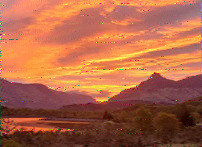

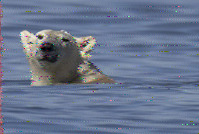
@swradiogram Show 400 Wow Kim! Tonight we tuned in to 9455 kHz WRMI at 2300z Southern Tier NY. Radio was Xeigu G106 Antenna G5RV
THIS PROGRAM 400(!) OF SHORTWAVE RADIOGRAM WILL BE BROADCAST 1-7 MAY 2025 AND REPEATED 8-14 MAY 2025
Welcome to program 400 of Shortwave Radiogram. ^^^ I'm Kim Andrew Elliott in Arlington, Virginia USA.
Here is the lineup for today's program, in MFSK modes as noted:
1:44 MFSK32: Program preview (now) 3:13 MFSK32: BBC Burmese on DTH channel formerly used by VOA 7:11 MFSK64: NIST launches new cesium fountain clock 10:30 MFSK64: This week's images 28:07 MFSK32: Closing announcements
Please send reception reports to [email protected]
And visit http://swradiogram.net
We're on Bluesky now: SWRadiogram.bsky.social
And X/Twitter: @SWRadiogram
Before RSID: <<2025-05-03T23:03Z MFSK-32 @ 9455000+1500>>
BBC press release:
BBC News Burmese launches on direct-to-home video channel in the aftermath of Myanmar earthquake
24 April 2025
To ensure audiences can access crucial information in the aftermath of the Myanmar earthquake, the BBC World Service has added a direct-to-home satellite video channel to the platforms delivering BBC News Burmese content.
In the coming four months, the Thaicom 6 satellite, which covers Myanmar, Thailand, and the wider region, will deliver BBC News Burmese TV and audio programming. The channel will also provide access, via a QR code, to the service's website, bbc.com/burmese. …
In the aftermath of the disaster that struck Myanmar on 28 March 2025, millions in the country, as well as Burmese-speakers in Thailand, came to the service's platforms for accurate updates and analysis. BBC News Burmese journalists were deployed to the earthquake epicentre and were reporting from Mandalay, Yangon, and Bangkok, as well as from London. BBC News Burmese extended its daily live radio bulletin from 15min to 30min to include additional reporting and lifeline information. Audiences can also watch the Monday to Friday 15-minute TV bulletin which goes on air at 20.45 local time.
BBC News Burmese channel on Thaicom 6 satellite will run all this programming, with evening repeats of radio and TV bulletins from May 2025. The channel will also visualise the QR code for the website bbc.com/burmese, so the viewers can access the latest news and information online.
Over the next few months, the direct-to-home satellite video channel – formerly used by VOA – will add to BBC News Burmese availability via the service's website as well as its YouTube channel and its Facebook page which has a following of 25m people. BBC News Burmese also connects with audiences via Instagram, Telegram and X. Digital free-to-air TV channel, Mizzima TV, rebroadcasts BBC News Burmese TV programmes.
BBC News Burmese is part of the BBC World Service.
Full text: https://www.bbc.com/mediacentre/2025/bbc-burmese-launches-on-direct-to-home-video-chan nel
ဘီဘီစီရေဒီယို၊ ရုပ်သံအစီအစဥ်တွေကို ဂြိုဟ်တုကဖမ်းယူနိုင်ပြီ
Shortwave Radiogram now changes to MFSK64 …
Before RSID: <<2025-05-03T23:07Z MFSK-32 @ 9455000+1500>>
This is Shortwave Radiogram in MFSK64
Please send your reception report to [email protected]
From Phys.org:
New atomic fountain clock joins elite group that keeps the world on time
by Rich Press National Institute of Standards and Technology April 28, 2025
Clocks on Earth are ticking a bit more regularly thanks to NIST-F4, a new atomic clock at the National Institute of Standards and Technology (NIST) campus in Boulder, Colorado.
This month, NIST researchers published an article in Metrologia establishing NIST-F4 as one of the world's most accurate timekeepers. NIST has also submitted the clock for acceptance as a primary frequency standard by the International Bureau of Weights and Measures (BIPM), the body that oversees the world's time.
NIST-F4 measures an unchanging frequency in the heart of cesium atoms, the internationally agreed-upon basis for defining the second since 1967. The clock is based on a "fountain" design that represents the gold standard of accuracy in timekeeping. NIST-F4 ticks at such a steady rate that if it had started running 100 million years ago, when dinosaurs roamed, it would be off by less than a second today.
By joining a small group of similarly elite timepieces run by just 10 countries around the world, NIST-F4 makes the foundation of global time more stable and secure. At the same time, it is helping to steer the clocks NIST uses to keep official U.S. time. Distributed via radio and the internet, official U.S. time is critical for telecommunications and transportation systems, financial trading platforms, data center operations and more.
NIST-F4 has improved time signals that are "used literally billions of times each day for everything from setting clocks and watches to ensuring the accurate time stamping of hundreds of billions of dollars of electronic financial transactions," said Liz Donley, chief of the Time and Frequency Division at NIST.
A special kind of clock
Cesium fountain clocks such as NIST-F4 are a type of atomic clock—a complex, high-precision device that extracts timing pulses from atoms. These clocks play a critical role in our globally connected society: They serve as "primary frequency standards" that work together to calibrate Coordinated Universal Time, or UTC (an agreed-upon system for keeping time using data from atomic clocks around the world, known as a time scale).
National measurement labs such as NIST produce and distribute versions of UTC using their own time scales; NIST's version, for example, is known as UTC(NIST). Those national time scales are then used to synchronize the clocks and networks we rely on in our daily lives.
In fountain clocks, a cloud of thousands of cesium atoms is first cooled to near absolute zero using lasers. Then, a pair of laser beams toss the atoms gently upward, after which they fall under their own weight.
During their journey, the atoms pass twice through a small chamber full of microwave radiation. The first time, as the atoms are on their way up, the microwaves put the atoms into a quantum state that cycles in time at a special frequency known as the cesium resonant frequency—an unchanging constant set by the laws of nature.
About one second later, as the atoms fall back down, a second interaction between the microwaves and the atoms reveals how close the clock's microwave frequency is to the atoms' natural resonant frequency. This measurement is used to tune the microwave frequency toward the atomic resonance frequency.
A detector then counts 9,192,631,770 wave cycles of the fine-tuned microwaves. The time it takes to count those cycles defines the official international second.
(That may change as early as 2030, when nations plan to consider redefining the second in terms of one or more different atomic elements used in so-called optical clocks that can measure time even more precisely than fountain clocks can. Even after that, cesium fountain clocks will still play an important, though diminished, role in timekeeping.)
Full text: https://phys.org/news/2025-04-atomic-fountain-clock-elite-group.html
This is Shortwave Radiogram in MFSK64
Please send your reception report to [email protected]
This week's images …
A polar bear swims while hunting along the coast of Hudson Bay. tinyurl.com/2aag6696 …
A hare pauses at Frankfurt airport. tinyurl.com/26bon4cf …
Sunrise over the Pap of Glencoe, Scotland, April 20. tinyurl.com/24rk4hnx …
Light coming through the stained glass window in Linlithgow Palace in Scotland. tinyurl.com/24rk4hnx …
Sailing into a sunset at West Beach in North Berwick, Scotland. tinyurl.com/24rk4hnx …
A flower at the Tyler Arboretum near Philadelphia. tinyurl.com/2a3hdoee
Blue-Eyed Grass (Sisyrinchium bellum), a tiny but brilliant wild flower, in Mt. Diablo State Park, northern California. tinyurl.com/27ttnlku …
An Orange Crowned Warbler (looking more green) in Mount Diablo State Park, California. tinyurl.com/26tdsn8k …
Marsh marigolds at the Mortom Arboretum near Chicago. tinyurl.com/2a7ze7lz …
Our painting of the week is flowers by David Hockney (British, b. 1937). tinyurl.com/2bp3yku5 …
Shortwave Radiogram returns to MFSK32 …
Before RSID: <<2025-05-03T23:28Z MFSK-64 @ 9455000+1500>>
This is Shortwave Radiogram in MFSK32 …
Transmission of Shortwave Radiogram is provided by:
WRMI, Radio Miami International, http://wrmi.net
and
WINB Shortwave, http://winb.com
Please send reception reports to [email protected]
And visit http://swradiogram.net
http://swradiogram.bsky.social
X/Twitter (for now): @SWRadiogram
I'm Kim Elliott. Please join us for the next Shortwave Radiogram.
3 notes
·
View notes
Text
Shortwave Radiogram, 1-14 May 2025 (program 400): Onward to program 800. Well, maybe program 700. More likely 600. We'll see if we reach program 500.
We have reached the milestone of 400 programs. Thank you for tuning in, keeping in touch, contributing to the socials, and for all your support. To celebrate our 400th program, we will transmit it twice. Due to family activities, the broadcast 1-7 May 2025 will be repeated 8-14 May 2025. If I am not eaten by a bear (who will suffer from indigestion), I will be back to produce program 401. For both news stories of program 400, I had to edit out some of the content to leave some time for images. Both stories are interesting, so follow the URLs for the full text. A video of last week's Shortwave Radiogram (program 399) is provided by Scott in Ontario (Wednesday 1330 UTC). The audio archive is maintained by Mark in the UK. Analysis is provided by Roger in Germany. Here is the lineup for Shortwave Radiogram, program 400, 1-14 2025, in MFSK modes as noted: 1:44 MFSK32: Program preview 3:13 MFSK32: BBC Burmese on DTH channel formerly used by VOA 7:11 MFSK64: NIST launches new cesium fountain clock 10:30 MFSK64: This week's images 28:07 MFSK32: Closing announcements (and image) Please send reception reports to [email protected] And visit http://swradiogram.net Bluesky: swradiogram.bsky.social or https://swradiogram.bsky.social Twitter: @SWRadiogram or https://twitter.com/swradiogram (visit during the weekend to see listeners’ results) Facebook group: https://www.facebook.com/groups/567099476753304 Shortwave Radiogram Gateway Wiki: https://wiki.radioreference.com/index.php/Shortwave_Radiogram_Gateway THE SHORTWAVE RADIOGRAM TRANSMISSION SCHEDULE IS IN THE IMAGE IMMEDIATELY BELOW. IF THE IMAGE DOES NOT DISPLAY FULL WIDTH, CLICK ON IT.

Other Shortwave broadcast programs that include digital text and images include The Mighty KBC, Pop Shop Radio and Radio North Europe International (RNEI). Links to these fine broadcasts, with schedules, are posted here.
Tobias in Germany received these images 26 April 2025, 0230-0300 UTC, 9265 kHz from WINB Pennsylvania ...

2 notes
·
View notes
Text




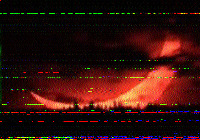
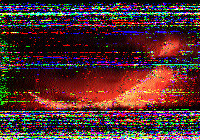






Here's the new rig in action.

So tonight I tried a head to head between my Xeigu G106 ham radio and 151' of dipole antenna and my new ATS-20+ and it's telescopic antenna + an alligator clip with another 6 feet of headphone wire to copy the @swradiogram
These were the images I copied on both sets the Ham equipment on the G106 and G5RV Dipole on the left and the ATS-20+ and telescopic whip on the right
9265 kHz WRMI 2330z in Southern Tier NY
This is Shortwave Radiogram in MFSK64
Please send your reception report to [email protected]
From RFE/RL:
EU Lawmakers Debate Support For RFE/RL Amid US Funding Freeze
By Rikard Jozwiak April 01, 2025
European Commissioner for Enlargement Marta Kos has emphasized the “need to protect Radio Free Europe/Radio Liberty (RFE/RL),” warning that "if we don’t, we hand a gift to autocrats the world over."
Her remarks came during a debate in the European Parliament plenary in Strasbourg on April 1 that focused on safeguarding access to democratic media, including RFE/RL.
The debate was initiated in response to an executive order signed by US President Donald Trump on March 14, which reduced the size of the US Agency for Global Media (USAGM), the body overseeing RFE/RL.
Shortly afterward, Kari Lake, a senior adviser to the USAGM CEO, issued a letter stating that the Congress-approved grant funding the broadcaster had been terminated.
While the grant termination has since been rescinded, the USAGM has not sent any of the congressionally appropriated funds, prompting RFE/RL to furlough some of its staff on April 1.
Kos, speaking on behalf of the EU foreign policy chief Kaja Kallas, said that “the European Union needs to be a refuge for independent media, including from Russia and Belarus, so they can continue their work; holding their political and business elites to account and exposing corruption.”
While the commissioner refrained from speaking about the potential of the EU stepping in to fund the media organization, several members of the European Parliament did mention the idea. Stormy Discussion
Sebastiao Bugalho, a Portuguese member of the largest group in the chamber, the center-right European People’s Party, said that “we will pay the price and shoulder the burden.”
Lithuanian lawmaker Virginijus Sinkevicius from the Greens underlined that “we must ensure that RFE/RL has access to long-term and stable funding, including from the EU.”
Alexandr Vondra, who was a prominent dissident in communist Czechoslovakia and is now a Czech MEP from the right-wing European Conservatives and Reformists, said that the radio helped spread information in repressive countries such as Iran, Belarus, and Russia, and called on the European Union to contribute to the station’s finding.
“Let us be open to finance [RFE/RL] also from EU money and find agreement on what form,” he said.
The one-hour debate became rather stormy at times with lawmakers shouting at each other in between speeches.
Several members from populist groups in the Strasbourg chamber spoke against potentially using EU money to finance the broadcaster.
Mary Khan, an MEP from the far-right Alternative for Germany party, said that RFE/RL “can finance itself” and added that “media should not be financed by European institutions.”
Slovak MEP Milan Uhrik, who belongs to the same Europe of Sovereign Nations Group as Khan, said that the EU should instead help farmers in Slovakia battling foot-and-mouth disease among its cattle, adding that “your independent media is the absolute opposite of independent media.”
Julien Sanchez, a French parliamentarian belonging to the Patriots for Europe, another populist right-wing fraction, said that the chamber was “hypocritical” in talking about this situation and “interfering with the situation in the United States.”
The debate will have no resolution to be voted on during this plenary session, which ends on April 3, but this could come at a later stage as several European parliamentary officials told RFE/RL that the house will continue to monitor the situation.
7ahkp»iit
ave Radiogram in MFSK64
Please send your reception report to [email protected]
This week's images …
Two men push a pallet of goods over tram tracks in Hong Kong. tinyurl.com/2cy8tryh …
A worker adjusts colorful lanterns during preparations for Buddha’s birthday celebrations on 5 May at Jogye temple, Seoul. tinyurl.com/2ccg7x3d …
The opening of the cheese market season in Alkmaar, the Netherlands. tinyurl.com/2ccg7x3d …
The cherry blossoms in Washington DC were at peak until a storm on March 31 blew many of them off the trees. tinyurl.com/2ao9vrfb …
Tulips at the Netherlands Carillon in Arlington Virginia, looking east towards Washington. tinyurl.com/2ynp4ygp …
Loch Knapps, Scotland, shortly before sunset. tinyurl.com/2ar4r95d …
From the Atlantic coast of Canada, through the clouds, the sunrise partial solar eclipse of March 29. tinyurl.com/2dlzcgno …
An Allen's hummingbird at Santa Cruz Arboretum, Santa Cruz, California. tinyurl.com/25w8n6c9 …
The first spring blooms at Indiana Dunes State Park. tinyurl.com/28kh5zgb …
Our painting of the week is "Garden on the Roof" (2022) by Jean Mallard (French, b. 1997). tinyurl.com/2ao6j4ez …
Shortwave Radiogram returns to MFSK32 …
Before RSID: <<2025-04-03T23:58Z MFSK-64 @ 9265000+1500>>
This is Shortwave Radiogram in MFSK32 …
Transmission of Shortwave Radiogram is provided by:
WRMI, Radio Miami International, http://wrmi.net
and
WINB Shortwave, http://winb.com
Please send reception reports to [email protected]
And visit http://swradiogram.net
X/Twitter (for now): @SWRadiogram
I'm Kim Elliott. Please join us for the next Shortwave Radiogram.
2 notes
·
View notes
Text
Shortwave Radiogram, 3-9 April 2025 (program 396): Maybe I can just take a nap and let AI produce the show
This week on Shortwave Radiogram, I violate my own rule against transmitting stories about AI. Artificial intelligence gets so much news and discussion we don't need more from SWRG. But this week's item involves propaganda and disinformation, sufficiently interesting to offset the IE stuff.
Also a story about the debate within the European Union about whether to provide funding for Radio Free Europe/Radio Liberty. Developments concerning this topic are moving quickly, so this news might be overtaken by events by our last transmission on April 9.
My Yaesu transceiver has developed an audio problem, so it will be going back to Yaesu for warranty service. For direct reception (not via an SDR) of the Wednesday 1330-1400 UTC broadcast, 15770 kHz, I swapped in my Sangean ATS-909X receiver. The nice thing about this Sangean receiver is that it has an external antenna jack, and a line-out jack, so that audio is not muted. My new Lenovo small-form-factor PC has a separate mic jack, not just one of those combo ports. I made sure of that when shopping for computers. So by way of a patch cord from the Sangean to the Lenovo, it worked.
There were some errors in the MFSK64 text. I noticed deep fades in the Fldigi waterfall. Probably the Sangean's AGC (assuming it has one) is not as good as my transceiver's AGC. And the images showed some interesting artifacts. Was there weird multipath between WRMI Florida and here in Virginia? Or was it caused by the Sangean and/or the unusual audio connection to Fldigi?

Scott in Ontario, called out on an errand, was unable to provide his usual video this past week. But H0B0_Radio provides this IQ file. You can open it in an SDR for various adjustments. The audio archive is maintained by Mark in the UK. Analysis is provided by Roger in Germany. Here is the lineup for Shortwave Radiogram, program 396, 3-9 April 2025, in MFSK modes as noted: 1:44 MFSK32: Program preview (now) 2:56 MFSK32: Russian propaganda outlet leverages AI 6:07 MFSK64: EU Lawmakers Debate Support For RFE/RL* 10:33 MFSK64: This week's images* 28:27 MFSK32: Closing announcements * with image(s) Please send reception reports to [email protected] And visit http://swradiogram.net Bluesky: swradiogram.bsky.social or https://swradiogram.bsky.social Twitter: @SWRadiogram or https://twitter.com/swradiogram (visit during the weekend to see listeners’ results) Facebook group: https://www.facebook.com/groups/567099476753304 Shortwave Radiogram Gateway Wiki: https://wiki.radioreference.com/index.php/Shortwave_Radiogram_Gateway THE SHORTWAVE RADIOGRAM TRANSMISSION SCHEDULE IS IN THE IMAGE IMMEDIATELY BELOW. IF THE IMAGE DOES NOT DISPLAY FULL WIDTH, CLICK ON IT.

Other Shortwave broadcast programs that include digital text and images include The Mighty KBC, Pop Shop Radio and Radio North Europe International (RNEI). Links to these fine broadcasts, with schedules, are posted here.
Max in Texas received these images 29 March 2025, 2300-2330 UTC, 9455 kHz from WRMI Florida ...

2 notes
·
View notes
Text










Great @swradiogram broadcast tonight. 9256 AM 2330z
Welcome to program 393 of Shortwave Radiogram.
I'm Kim Andrew Elliott in Arlington, Virginia USA.
Here is the lineup for today's program, in MFSK modes as noted:
1:45 MFSK32: Program preview (now) 2:59 MFSK32: A new portable DRM receiver made in India* 7:24 MFSK64: NASA fires chief scientist, and more cuts 9:56 MFSK64: This week's images* 27:39 MFSK32: Closing announcements
with image(s)
Please send reception reports to [email protected]
And visit http://swradiogram.net
We're on Bluesky now: SWRadiogram.bsky.social
And X/Twitter: @SWRadiogram
From Radio World:
Solar Grove Introduces a Personal DRM Receiver
By RW Staff March 7, 2025
The Digital Radio Mondiale consortium is welcoming the announcement of a small and affordable radio receiver model that will be made in India.
It will be manufactured by a local affiliate of Solar Grove Solutions, a U.S.-based company that makes accessible devices.
Model N88 is a medium-wave, shortwave and VHF Band II/FM receiver with analog and DRM reception. It runs on three AA batteries and is expected to be available for purchase in Q4 of this year. Pricing has not yet been announced.
“This is a significant step towards delivering cutting-edge technology at accessible prices to a global audience,” wrote DRM Consortium Chair Ruxandra Obreja.
The N88 was developed in collaboration with CML Microcircuits and Alongside Tech, which is providing design and application development. The latter company recently joined the DRM consortium.
The organizations highlighted the receiver for its small size, low power consumption and integration with an Android app.
Renatus Pinto of Shemish Grove Solutions India, the receiver’s manufacturer, was quoted in the announcement, “We believe this unique DRM radio will revolutionize the way people experience radio, offering a unique blend of traditional analog reception and the advanced capabilities of DRM.”
Although the receiver is intended for global markets, the fact that it will be made in India is notable, as the country is an important potential growth market for DRM. The consortium maintains a web page devoted to the use of DRM in the country. All India Radio uses the DRM standard in the AM bands there. The national government has not announced a decision about the digitization of the FM band.
See also: https://www.drm.org/affordable-all-band-drm-and-analogue-receiver-manufactured-in-india/
Shortwave Radiogram now changes to MFSK64 …
This is Shortwave Radiogram in MFSK64
Please send your reception report to [email protected]
From AFP via Phys.org:
NASA fires chief scientist, more Trump cuts to come
March 12, 2025
NASA announced Tuesday the dismissal of its chief scientist and others to comply with orders from President Donald Trump, marking the latest in a series of administration actions undermining climate change research.
While the move affects only 23 people, a spokeswoman indicated more cuts are coming.
The first round notably eliminates the Office of the Chief Scientist, led by Katherine Calvin, a renowned climatologist who contributed to key UN climate reports. She and other US delegates were also barred from attending a major climate science meeting in China last month.
"To optimize our workforce, and in compliance with an Executive Order, NASA is beginning its phased approach to a reduction in force, known as a RIF," agency spokeswoman Cheryl Warner said.
"A small number of individuals received notification March 10 they are a part of NASA's RIF. If they're eligible, those employees may opt to participate in the Voluntary Early Retirement Authority, or VERA, or complete the RIF process."
Also eliminated are the Office of Technology, Policy, and Strategy and the Diversity, Equity, Inclusion, and Accessibility Branch of the Office of Diversity, Equity, and Inclusion.
NASA has so far avoided the deep cuts affecting other agencies, reportedly due to last minute intervention by Jared Isaacman, Trump's nominee for NASA chief. Isaacman, an e-payments billionaire and SpaceX customer, is seen as close to Elon Musk—Trump's key advisor and architect of federal cost-cutting efforts.
In February, NASA had been preparing to lay off around a thousand probationary employees. However, Isaacman reportedly asked for the cuts to be put on hold, according to Ars Technica. NASA has not explained the reversal.
The new layoffs, first reported by NASA Watch citing an internal memo, could signal a shift away from research and toward exploration.
Trump and Musk both support a human mission to Mars. In his State of the Union address last week, Trump declared the US would "plant the American flag on the planet Mars and even far beyond."
NASA plays a crucial role in climate research, operating a fleet of Earth-monitoring satellites, conducting airborne and ground-based studies, developing sophisticated climate models, and providing open-source data to researchers and the public.
Trump, who has called climate change a "scam" and expressed disdain for the UN and climate science, has already pulled the US out of the Paris Agreement for a second time.
Meanwhile, his administration has dismissed hundreds of employees at the National Oceanic and Atmospheric Administration (NOAA), the nation's other key climate agency, with more cuts expected.
See also: https://phys.org/news/2025-03-trump-administration-unveils-environment-rollbacks.html
tentnfntn
This is Shortwave Radiogram in MFSK64
Please send your reception report to [email protected]
This week's images …
tnec ocsothetno_
A red deer at sunrise in Bushy Park, London, March 4. tinyurl.com/2aaz6afn …
Riding a horse named Tom Kitten on a beach in suburban Melbourne, Australia, March 5. tinyurl.com/2aaz6afn …
The sun sets behind the Giant Swing, also known as Sao Chingcha, a religious structure in Bangkok. tinyurl.com/22qoequ2
A man moves his bishop during a chess game in Central Park, New York City. tinyurl.com/29to33db …
sunrise in Washington DC, March 12. tinyurl.com/2yjwqryz …
Plum blossoms at the DC War Memorial in Washington DC, March 7. tinyurl.com/2de2u4dg …
An example from the Special Exhibition of Wildflowers at the Korea National Arboretum in Pocheon, South Korea. tinyurl.com/22x3wrsw …
A moth (or is it a butterfly?) at the Tasmanian Arboretum, March
tinyurl.com/2cxmak5n …
The view out the window of the Russian Orthodox Chapel, Fort Ross State Park, Sonoma County, California. tinyurl.com/29n99bdz …
Our painting of the week is "Park Row, Leeds" by John Atkinson Grimshaw (1836-1893). tinyurl.com/2akr9cc2 …
Shortwave Radiogram returns to MFSK32 …
This is Shortwave Radiogram in MFSK32 …
Transmission of Shortwave Radiogram is provided by:
WRMI, Radio Miami International, http://wrmi.net
and
WINB Shortwave, http://winb.com
Please send reception reports to [email protected]
And visit http://swradiogram.net
X/Twitter (for now): @SWRR§ram
I'm Kim Elliott. Please join us for the next Shortwave Radiogram.
3 notes
·
View notes